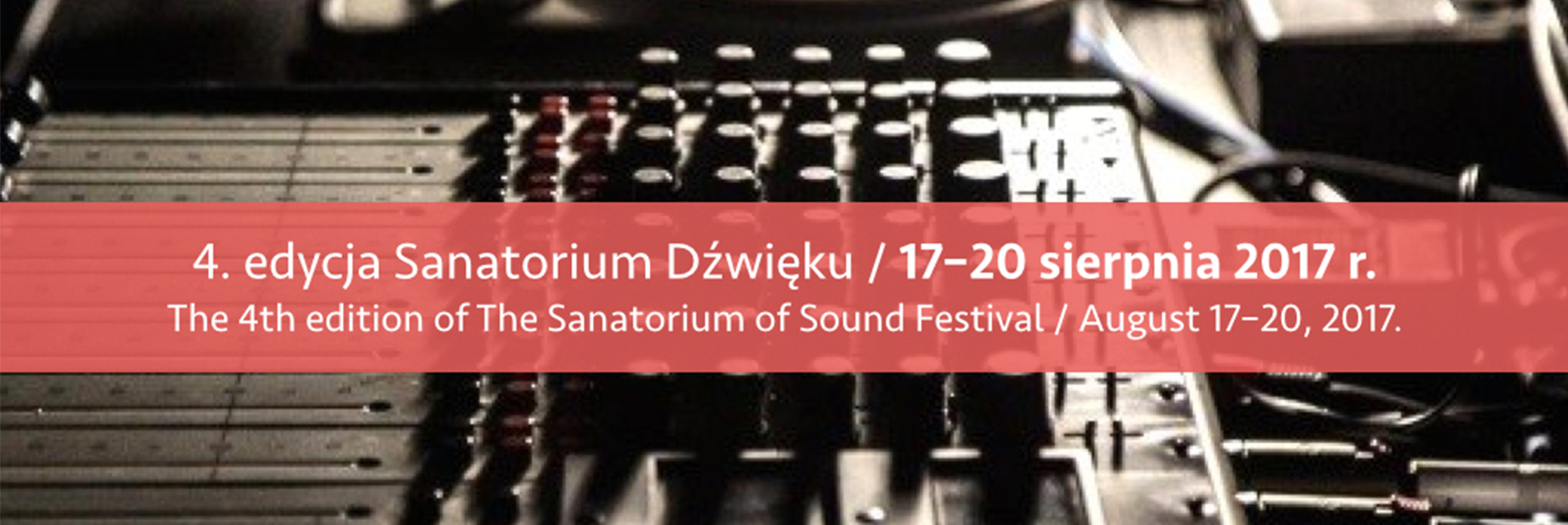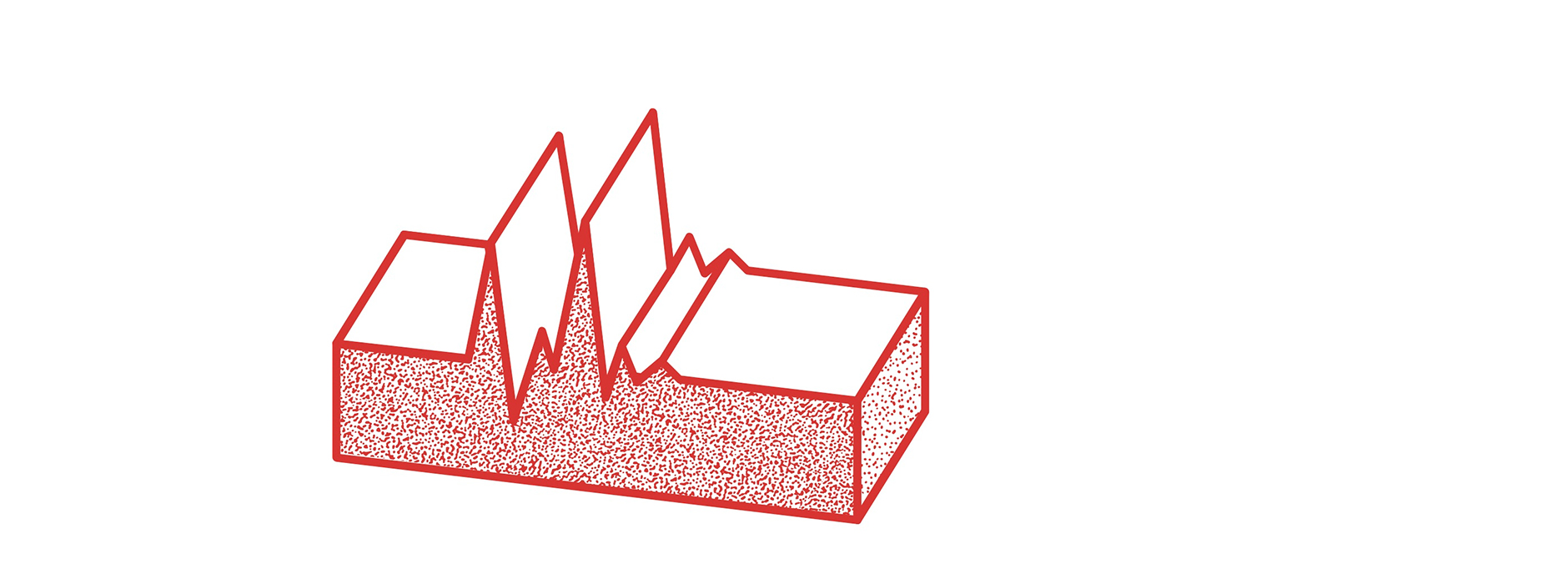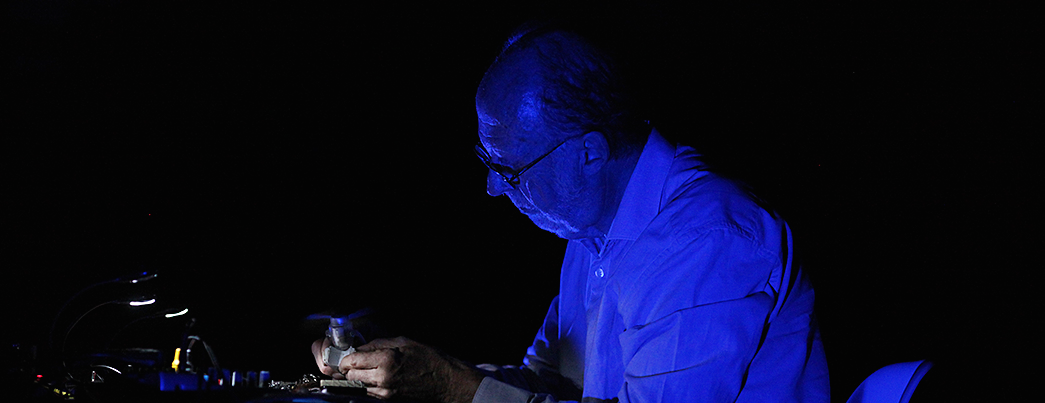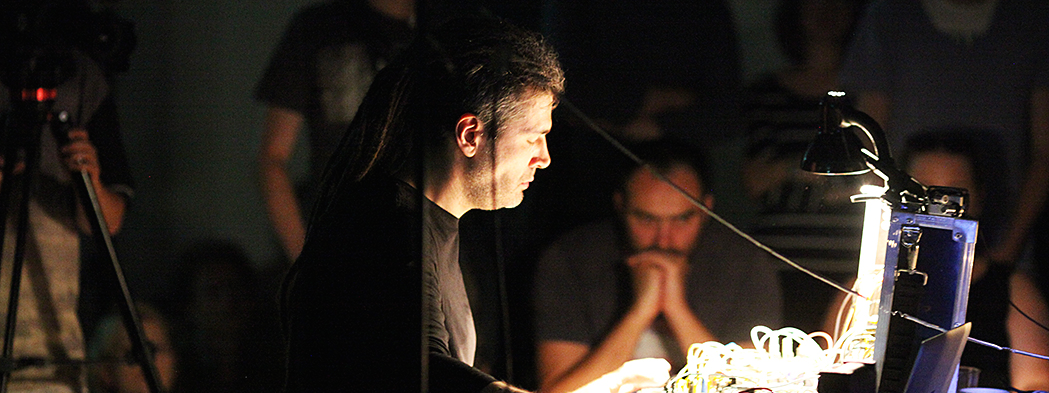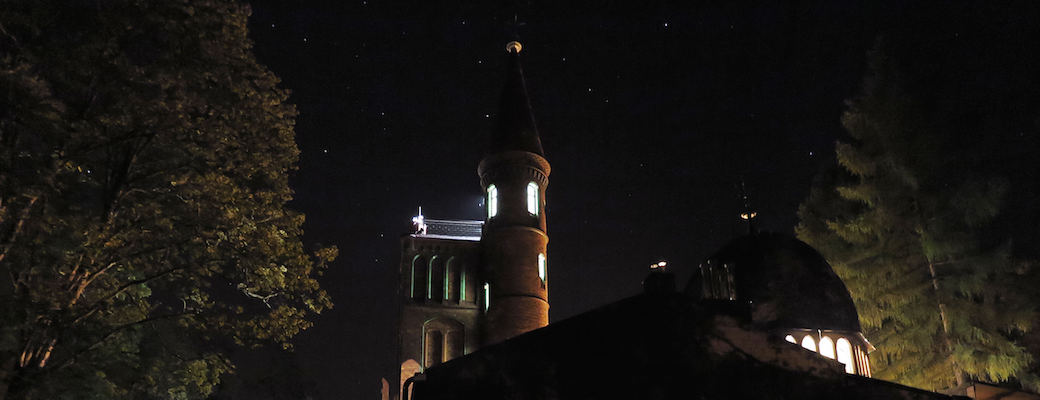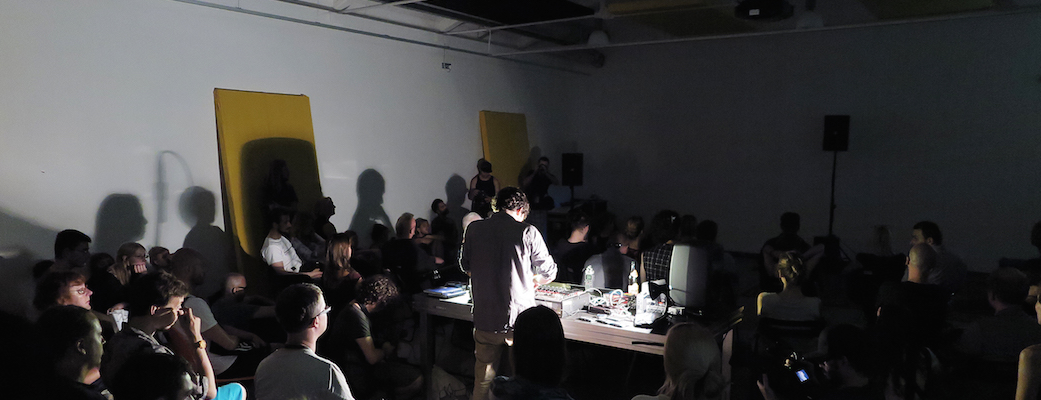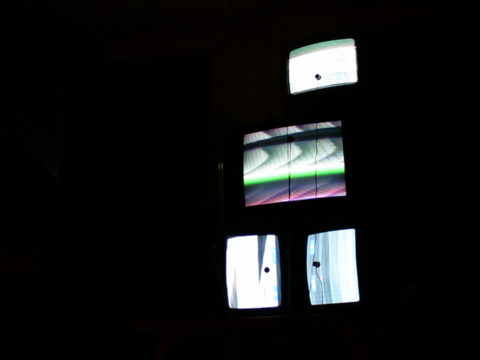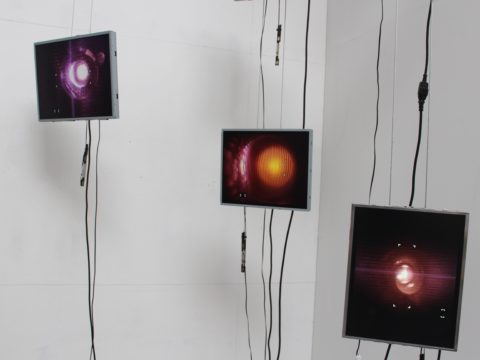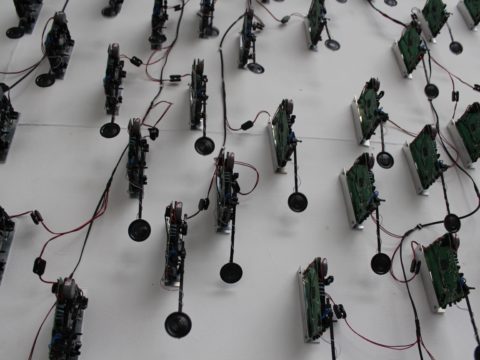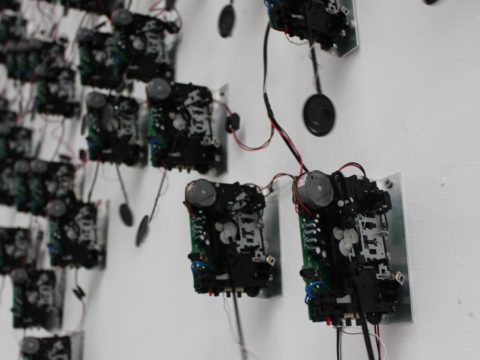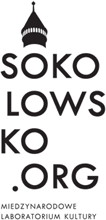A-I-R Sanatorium of Sound 2016 is a residency program for composers, improvisers and sound artists, creating a platform for contemporary music and broadly understood sound art. One of the program tasks is to support new, creative curatorial practices relating to the topic of sound and music, as well as the search for meaning in the intersection of art and technology.
The program is run in within the Artist-in-Residence Programme A-i-R Wro, part of European Capital of Culture Wroclaw 2016. The invited artists will take part in a two-week residencies in Sokołowsko, which effects (such as compositions, sound installations or theoretical works) will be presented also at the third edition of the Sanatorium of Sound Festival, held in Sokołowsko on 12-14th August 2016.
Artists invited to AIR Sanatorium of Sound 2016: Keith Rowe, Michael Pisaro, Olivia Block, Valerio Tricoli, Alessandro Bosetti, Mario de Vega, Martin Howse, Stephen Cornford.
Curators of AIR Sanatorium Sound 2016: Gerard Lebik, Michał Libera, Zuzanna Fogtt.
Artist-in-Residence Programme A-i-R Wro is co-financed from the funds of the Ministry of Culture and National Heritage of Poland.
Keith Rowe // A-I-R Sanatorium Dźwięku Sokołowsko
10.08-24.08.2016

British musician is another guest residency program sound A-I-R Sanatorium Sound Sokołowsko.
During the residency in Sokołowsko Keith Rowe will continue the project “Dry Mountain” which has been founded last year with Gerard Lebik, when the two musicians recorded their improvisations and created a score from the selected, several-minutes-long fragment. The composed piece will be interpreted by instrumentalists invited to perform it: Johnny Chang, Mike Majkowski, Bryan Eubanks, Xavier Lopez, Jonas Kocher, Gaudenz Bardutt, Emilio Gordoa, as well as visual artists (Bożenna Biskupska, Radek Szlaga, Alicja Bielawska, Daniel Koniusz), who will create further graphical scores to enable performances in various instrumental configurations. The project as a whole conforms to the broader tendency for experimentation in the fields of musical notation and the interference of different artistic disciplines.
Keith Rowe (born 16 March 1940 in Plymouth, England) is an English free improvisation tabletop guitarist and painter. Rowe is a founding member of both the influential AMM in the mid-1960s (though in 2004 he quit that group for the second time) and M.I.M.E.O. Having trained as a visual artist, Rowe’s paintings have been featured on most of his own albums. After years of obscurity, Rowe has achieved a level of relative notoriety, and since the late 1990s has kept up a busy recording and touring schedule. He is seen as a godfather of EAI (electroacoustic improvisation), with many of his recent recordings having been released by Erstwhile Records. Rowe began his career playing jazz in the early 1960s—notably with Mike Westbrook and Lou Gare. His early influences were guitarists like Wes Montgomery, Charlie Christian and Barney Kessel.[1] Eventually, however, Rowe grew tired of what he considered the form’s limitations. Rowe began experimenting, slowly and gradually. An important step was a New Year’s resolution to stop tuning his guitar—much to Westbrook’s displeasure. Rowe gradually expanded into free jazz and free improvisation, eventually abandoning conventional guitar technique.
This change in his approach to guitar, Rowe reports, was partly inspired by a teacher in one of his painting courses who told him, “Rowe, you cannot paint a Caravaggio. Only Caravaggio can paint Caravaggio.” Rowe reports that after considering this idea from a musical perspective, “trying to play guitar like Jim Hall seemed quite wrong.” For several years Rowe contemplated how to reinvent his approach to the guitar, again finding inspiration in visual art, namely, American painter Jackson Pollock, who abandoned traditional painting methods to forge his own style. “How could I abandon the technique? Lay the guitar flat!”
Rowe developed various prepared guitar techniques: placing the guitar flat on a table and manipulating the strings, body and pick-ups in unorthodox ways to produce sounds described as dark, brooding, compelling, expansive and alien. He has been known to employ objects such as a library card, rubber eraser, springs, hand-held electric fans, alligator clips, and common office supplies in playing the guitar. A January 1997 feature in Guitar Player magazine described a Rowe performance as “resemble a surgeon operating on a patient.” Rowe sometimes incorporates live radio broadcasts into his performances, including shortwave radio and number stations (the guitar’s pick-ups will also pick up radio signals, and broadcast them through the amplifier).
AMM percussionist Eddie Prévost reports that Rowe has “an uncanny touch on the wireless switch”, able to find radio broadcasts which seem to blend ideally with, or offer startling commentary on, the music. (Prévost, 18). On AMMMusic, towards the end of the cacophonous “Ailantus Glandolusa”, a speaker announces via radio that “We cannot preserve the normal music.” Prevost writes that during an AMM performance in Istanbul, Rowe located and integrated a radio broadcast of “the pious intonation of a male Turkish voice. AMM of course, had absolutely no idea what the material was. Later, it was complimented upon the judicious way that verses from The Koran had been introduced into the performance, and the respectful way they had been treated!” In reviewing World Turned Upside Down, critic Dan Hill writes, “Rowe has tuned his shortwave radio to some dramatically exotic gameshow and human voices spatter the mix, though at such low volume, they’re unintelligible and abstracted. Rowe never overplays this device, a clear temptation with such a seductive technology – the awesome possibility of sonically reaching out across a world of voices requires experienced hands to avoid simple but ultimately short-term pleasure. This he does masterfully, mixing in random operatics and chance encounters with talkshow hosts to anchor the sound in humanity, amidst the abstraction.”
Some accounts report that Rowe’s guitar technique was an influence on Pink Floyd founder Syd Barrett: “Taking his cues from experimental guitarist Keith Rowe of AMM, Barrett strived to push his music farther and farther out into the zone of complete abstraction.”[6]
Rowe has worked together with numerous composers and musicians, including Cornelius Cardew, Christian Wolff, Howard Skempton, Jeffrey Morgan, John Tilbury, Evan Parker, Taku Sugimoto, Otomo Yoshihide, Sachiko M, Oren Ambarchi, Christian Fennesz, Burkhard Beins, Toshimaru Nakamura, David Sylvian and Peter Rehberg.
http://efi.group.shef.ac.uk/musician/mrowe.html
Michael Pisaro // A-I-R Sanatorium Dźwięku Sokołowsko
07-21.08.2016

Michael Pisaro is another guest residency program sound A-I-R Sanatorium Sound Sokołowsko.
As an Artist-in-Residence, Pisaro will create a completely new piece of music as a continuation of his work. His concept sketches made at the beginning of the residency will enable him to work with other invited artists during the Sanatorium of Sound Festival in 2016, Sokolowsko.
The purpose of this residency is to show the work of one of the greatest contemporary composers. Given that Pisaro has not yet performed in Poland, we would like to take this opportunity to introduce him to the Polish audience.
Michael Pisaro was born in Buffalo in 1961.
He is a composer and guitarist, a member of the Wandelweiser Composers Ensemble and founder and director of the Experimental Music Workshop, Calarts.His work is frequently performed in the U.S. and in Europe, in music festivals and in many smaller venues.It has been selected twice by the ISCM jury for performance at World Music Days festivals (Copenhagen,1996; Manchester, 1998) and has also been part of festivals in Hong Kong (ICMC, 1998), Vienna (Wien Modern,1997), Aspen (1991), London (Cutting Edge, 2007), Glasgow (INSTAL 2009), Huddersfield (2009), Chicago (New Music Chicago, 1990, 1991) and elsewhere.He has had extended composer residencies in Germany (Künstlerhof Schreyahn, Dortmund University), Switzerland (Forumclaque/Baden), Israel (Miskenot Sha’ananmim), Greece (EarTalk) and in the U.S. (Birch Creek Music Festival, Wisconsin).
Concert length portraits of his music have been given in Munich, Jerusalem, Los Angeles, Vienna, Merano (Italy), Brussels, New York, Curitiba (Brazil), Amsterdam, London, Tokyo, Austin, Berlin, Chicago, Düsseldorf, Zürich, Cologne, Aarau (Switzerland), and elsewhere.He is a Foundation for Contemporary Arts, 2005 and 2006 Grant Recipient.Most of his music of the last several years is published by Edition Wandelweiser (Germany).Several CDs of his work have been released by such labels as Edition Wandelweiser Records, Compost and Height, confront, Another Timbre, Cathnor, Nine Winds and others, including most recently “transparent city, volumes 1–4”, “an unrhymed chord”, “hearing metal 1”, “A Wave and Waves” and “harmony series (11–16)”. His translation of poetry by Oswald Egger (“Room of Rumor”) was published in 2004 by Green Integer. He is Co-Chair of Music Composition at the California Institute of the Arts near Los Angeles.He has performed many of his own works and those of close associates Antoine Beuger, Kunsu Shim, Jürg Frey and Manfred Werder, and works from the experimental tradition, especially John Cage, Christian Wolff, James Tenney and George Brecht.
http://www.timescraper.de/michael-pisaro.html
Olivia Block // A-I-R Sanatorium Dźwięku Sokołowsko
06-15.08.2016

Open Air: sound and visual installation by Olivia Block
August 2016 at Sokolowsko sanatorium, Poland.
Olivia Block is another guest residency program sound A-I-R Sanatorium Sound Sokołowsko.
In August, 2016, Olivia Block will complete during residency commissioned by Sanatorium of Sound Festival. Block will create a sound and visual piece for various rooms in the beautiful dilapidated Sokolowsko sanatorium.
Layered breath sounds will quietly emanate from multiple speakers, coalescing with the atmospheric sounds of the space like ghosts. Large curtains made from loosely woven cotton surgical gauze, will be suspended from the ceiling and over the windows inside the sanatorium. The curtains will catch the circulating air, billowing and floating—animating a flow of energy.
Open Air draws attention to the movement of air in various forms – literally and metaphorically. The piece is inspired by the history of sanatoria, including related historical concepts of illness and transmission mechanisms and treatments of Tuberculosis.
Installation takes place as part of the A-I-R Sanatorium of Sound Sokołowsko implemented in cooperation with the Artist-in-Residence Programme A-i-R Wro. The A-i-R Wro Programme is a part of the European Capital of Culture Wrocław 2016 and is subsidized by the Ministry of Culture and National Heritage of Poland.
Olivia Block is a media artist who creates sound recordings, audio-visual installations, performances, sound design for cinema, and scores for orchestra and chamber music concerts.
Over the last twenty years, Block has pioneered the utilization of audio field recordings and found materials in the realms of music and sound art. She combines field recordings, chamber instruments and electronic textures, resulting in mysterious and vivid electroacoustic sound pieces including Pure Gaze, Mobius Fuse, Karren, and others. Block creates multimedia installations and performances utilizing found sounds from micro cassette tapes, field recordings, video, and curated 35mm slides. Block’s work reflects her interests in site specificity, ethnographic sound, architectural sound, and found/archival materials from the 1950’s-1990’s. Her work with expanded cinema and film artists has led to interests related to cinema sound, and visual phenomena like shadows and reflections. Block has developed a body of partially-improvised compositions for inside-piano with various materials, including metal pieces and shards of broken glass. Her scores for orchestra and chamber instruments emphasize timbre and dynamics. Her most recent orchestral pieces include portions of “easy listening” inspired music from the 1970’s, playing underneath recordings of room ventilation, white noise and commercial spaces like malls. Her solo performances include partially improvised pieces for electronics, amplified objects, and piano, presented in a slow and deliberate gestural style that Steve Smith of the New York Times described recently as having “palpable sensations of volition and emotional involvement.”Block has performed, premiered and exhibited her work throughout Europe, America, and Japan in tours in festivals including Incubate (Tilburg), Festival del Bosque Germinal (Mexico City), Sonic Light (Amsterdam), Kontraste (Krems), Dissonanze (Rome), Archipel (Geneva), Angelica (Bologna), Sunoni per il Popolo (Montreal), and many others. Additionally, she has presented work at the ICA (London), MCA (Chicago), La Biennale di Venezia 52nd International Festival of Contemporary Music, The Kitchen (NYC), ISSUE Project RoomExperimental Intermedia (Brooklyn), and TIFF (Toronto).She has completed residencies and premiered works at Mills College of Music, The School of the Art Institute of Chicago and The Berklee College of Music. Block has presented talks at additional universities in film, music, media arts, and anthropology departments, including Yale University, University of Chicago, and Indiana University. Block has created sound installations for public sites and exhibition spaces including the Museum of Contemporary Art in Chicago, CONTEXT (Miami and NY), Millennium Park (Chicago), the library at Wesleyan University in Connecticut, the Lincoln Conservatory Fern Room (Chicago), and at the “Echoes Through the Mountains” exhibit at the 2006 Winter Olympics (Turin, Italy). Her 2013 LP/download release, Karren (Sedimental, 2013) was chosen as “Best of 2014″ by The Wire, Pitchfork, and Artforum, among other publications. She was selected as a 2014 “Person of the Year” in the Chicago Reader. Aberration of Light, her latest solo release, is now available on NNA tapes. She recently completed her large-scale multi-speaker sound installation, Sonambient Pavilion, in Chicago’s Millennium Park, utilizing sounds from Harry Bertoia’s Sonambient sculptures. She is currently working on several pieces for piano and organ. She will perform at MOOG Fest in May. Olivia Block is based in Chicago.
Stephen Cornford // A-I-R Sanatorium of Sound 2016 Sokołowsko

Stephen Cornford is an audio-visual artist working between installation and performance. His practice is concerned with reconfiguring consumer electronics as expressive and reflective devices. He studied at The Slade School of Fine Art and Dartington College of Arts and is currently a PhD candidate at Winchester School of Art with Jussi Parikka and Ian Dawson.
Stephen has had solo exhibitions in Tokyo, Berlin, Brighton, Bergen, Ljubljana & London and his work has been included in group exhibtions at the ZKM Center for Art & Media, Karlsruhe; ICC, Tokyo; Haus der Electronische Kunst, Basel; Sigma Foundation, Venice and at Bienalles in Lodz and Poznan.
He is co-director the Audiograft Festival in Oxford and the Consumer Waste record label and is a founder member of Bristol Experimental and Expanded Film.
His audio work has been published by Rumpsti Pumsti, VLZprodukt, Senufo Editions, MoTA, Winds Measure, 3leaves, Vitrine, Mantile and Accidie and he has collaborated with Ben Gwilliam, Patrick Farmer, Daniel Bennett and Samuel Rodgers among others.
https://soundcloud.com/stephen-cornford
Migration (2015)
An installation for numerous factory-second cassette dictaphones. The mechanics and audio electronics of these machines have been subtly transformed – their simple motion, voltage and operative noise are combined into a visual and aural display reminiscent of the massed migrations of birds or insects. Obliquely referencing the appropriation of the term ‘Migration’ as a data process the work reflects on the global movement of consumer electronics as they pass from production to pollution in the ever accelerating life cycles between generations of technology.
Alessandro Bosetti // A-I-R Sanatorium Dźwięku w Sokołowsku
Alessandro Bosetti plays Leoš Janáček Notebooks

The aim of the residence will be to expand Bosetti’s radio opera “The Notebooks”. At the moment it functions as a work-in-progress and in its purely sound form it has won the Ars Acustica 2015 contest. The starting point of Bosetti’s project are the notation of an outstanding Czech composer Leoš Janáček found in Brno. In times when it wasn’t possible to record the surrounding sound, he used a pre-phonographic way of registering the sound – the music notation. He didn’t use it, as it was commonly done, to register an imagined music composition, but to note the sounds being in fact composed in reality. In this case his notation can be regarded as one of a kind “pre-recording recording”. While conducting his research in Brno, Alessandro Bosetti has chosen a couple dozen Leoš Janáček’s notes and decided to use them as a music score. In his project he aims to recreate the sounds the were present in the Czech’s composer life. In his interpretations he enters a dispute with Leoš Janáček’s notations and creates a jewel case-like construction. The aim of the residence in Sokołowsko will be a composition of a new sound version of his opera and creating its visual counterpart reflecting Janáček’s notation. The result will therefore be an audio-video piece reflecting the notes of the Czech composer.
Alessandro Bosetti (1973) is a composer, performer and sound artist. Most of his work relates to the issue of musicality of the spoken language and sound aspects of verbal communication, especially misunderstandings and problems of translation. A significant part of his works are compositions for voice and electronics blurring the differences between them. He composed for such important institutions as the GRM in Paris, Roulette and The Stone in New York City, Cafe OTO in London, WDR Studio-akustische-Kunst in Cologne and Deutschland Radio Kultur in Berlin and the other in Europe, Asia and the United States. Honored with such awards as Phonurgia Nova (2012) for his composition “636” IDAF (2013) for “Mirror Mask” Ars Acustica (2015) for “The Notebooks”. Cooperates with, among others, Tony Buck, Chris Abrahams (The Necks ), Jennifer Walshe. As a composer, is also working with bands like Kammerenseble Die Neue Musik and Maulwerker in Berlin or Stuttgart Neue Vokalsolisten.

Mario de Vega / Marcelina Wellmer
Phase Disorder // A-I-R Sanatorium of Sound 2016 Sokołowsko
1-14.04.2016
Phase Disorder For synthetic materials, custom-made electronics, and video projection 2016
Phase Disorder presents itself as a series of sculptures and audio-visual narrations based on the juxtaposition of natural and synthetic materials.
Through molecular irritation with microwave technology, thermal energy, concrete sound, psychoacoustic phenomena, and visual ambiguity as primal elements, the production process is based on the molecular disorder of non-conductive and conductive materials using microwaves refraction and friction. In doing so, microwave technology will be used as a tool to modify the physical structure of materials through a speculative approach. The process and results obtained will be photographed and treated with digital media to produce moving images with fragmented narratives, afterwards exhibited as an audio- visual performance.
During the residency, this collaboration will focus on the exploration of acoustic phenomena in sokolowsko through recording techniques based on inverse engineering approaches and the modification of materials founded on site, producing a body of work for a series of sculptures and an audio-visual performance as a technic to extend the potential of the process in which the process itself will be exposed as artistic output.
The first part of the work will aim to produce a series of sculptures obtained by the molecular irritation of assorted materials with microwaves, using polyurethane, alkaline solutions, glycerol, sodium hydroxide, petrochemicals, leather, carbon, silicon, semiconductors, copper, gold, and aluminium between other materials. The production process will be photographed and used as media to obtain single frames of the process to compile material for post-production.
Phase Disorder has two main outcomes:
– a series of sculptures produced by Mario de Vega,
– an audio-visual performance by Mario de Vega and Marcelina Wellmer.
Mario de Vega (Born in Mexico City, 1979).
Mario de Vega works with site-specific installations, sound, sculpture, documentation of ephemeral interventions, actions and publications in diverse formats, exploring the value of failure, vulnerability and simulation. His work has been exhibited throughout Mexico, USA, Canda, South Africa, India, Russia, Japan and around Europe. He works and lives in Berlin and Mexico City.
Marcelina Wellmer (Born in Poland, 1975).
Marcelina Wellmer works with video, installation and painting, exploring symbiotic relations between humans and interfaces of information exchange and media, crossing the border from analog to digital and vice versa.
Wellmer reuses lost and recovered data files and IT hardware, exploring erroneous process of encoding and decoding. Her work has been exhibited around Europe, Australia, Canada, USA and Japan. She works and lives in Berlin.
Martin Howse // A-I-R Sanatorium of Sound Sokołowsko
03-17 .03. 2016
Martin Howse is occupied with an artistic investigation of the links between the earth (geophysical phenomena), software and the human psyche (psychogeophysics), proposing a return to animism within a critical misuse of scientific technology. Through the construction of experimental situations (within the process-driven performance, laboratories, walks, and workshops), material art works and texts, Martin Howse explores the rich links between substance or materials and execution or protocol, excavating issues of visibility and of hiding within the world.
From 1998 to 2005 he was director of ap, a software performance group working with electronic waste, and pioneering an early approach to digital glitch. In 2005 his environmental computational work, entitled ap0201 installed within the Mojave desert received first prize within the Art & Artificial Life competition VIDA 8.0. From 2007 to 2009 he hosted a regular workshop, micro-residency and salon series in Berlin. Recently he has worked and collaborated on acclaimed projects and practices such as The Crystal World, Psychogeophysics, Earthboot and Sketches towards an Earth Computer. For the last ten years, he has initiated numerous open-laboratory style projects and performed, published, lectured and exhibited diversely. He is equally the creator
of the skin-driven audio divination noise module, aka. The Dark Interpreter, and the ERD modular series.
During the residency in Sokołowsko Martin Howse using tools and methods specified in „Psychogeophisics” statement will run a project at the intersection of art, geophysics, and digital technologies.
http://www.psychogeophysics.org/wiki/doku.php?id=wikipedia
www.wroclaw2016.pl/residencies
On 17th March at 20:00 we invite you to the concert and lecture (Martin Howse / Gerard Lebik) in
Wrocław Literature House (Wrocławski Dom Literatury) // Przejście Garncarskie 2 (II floor) in Wrocław. This event is prepared in cooperation with the Rozkurz program.
Artist-in-Residence Programme A-i-R Wro is co-financed from the funds of the Ministry of Culture and National Heritage of Poland.
